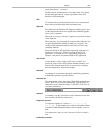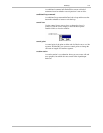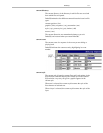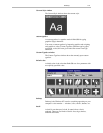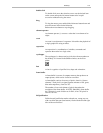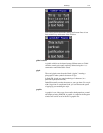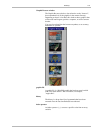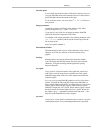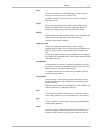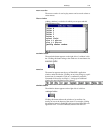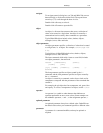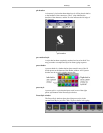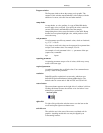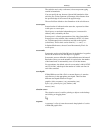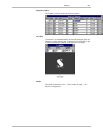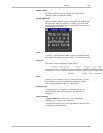
Glossary 177
Deko500 User’s Guide
layer
A layer is one element of a Deko500 graphic. A layer is either a
text layer, a rectangle layer or an ellipse layer.
A graphic can have any number of layers. Layers are rendered
from front to back.
layout
The layout is the arrangement of windows and toolbars on the
desktop. Deko500 provides several pre-configured layouts for
composing, editing and playing back graphics and macros.
leading
Leading refers to the spacing between rows of text. The higher the
leading amount, the more space there is between rows.
“Leading” rhymes with “wedding.”
linear key signal
A linear key signal varies from black to white, including
intermediate gray shades. This is in contrast (no pun intended) to a
hard key signal, which has areas of either black or white but no
gray.
A linear key signal is required for keyed graphics to look properly
anti-aliased over background video. Your switcher must be capable
of handling linear key.
list parameter
A list parameter, also known as a repeating parameter, specifies a
list of one or more values. Depending on the command, the values
on the list may or may not be of the same type.
A command can have no more than one list parameter, which is
usually the last parameter.
local variable
A local variable is used exclusively in the current macro, and is
deleted when the macro ends. By default, user-defined variables
are local variables.
One macro cannot reference a second macro’s local variables, even
if the second macro is a subroutine of the first.
look
A look controls everything about the way a text character looks—
colors, edges, shadows, etc. A look is made up of a list of details.
loop
A loop is a section of a macro that is repeated a specified number
of times during playback.
macro
A macro is a series of Deko500 commands that can be saved in a
macro file and played back on demand. You can use the macro
recorder to record a macro, or you can edit a macro as a text file.



